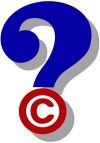 Dear Doc:
Dear Doc:
I know that there’s a court case over whether a monkey that took a selfie can own the copyright in the photo (or whether there even is a copyright on it.) I just read that computers are learning how to write music, paint pictures, and do lots of things that we humans think are creative. Can computers be authors and own copyrights in the works that they create? If a computer arranges music (the song “Daisy”, for example) can it earn royalties?
Just asking,
HAL9000
Dear HAL:
You’re correct that computers are now making art. Using a branch of artificial intelligence called “machine learning” computers are now analyzing thousands of songs, and then composing new ones based on common features that they detect in the music that they’ve “heard”. One of LW&H’s clients even applied for patent after he built one of these systems that was capable of understanding musical moods, motifs, and themes without having to label them with words. That system, and other like it, are able to write new music that is similar to existing music, but does not copy at all – it “understands” what makes one song similar to another. Software like that may even be able some day to prove that one song is, or is not a copy of another, simplifying copyright law suits which now require the expert testimony of musicologists to guide juries in the features to which they should listen in making their similarity determinations.
But, back to computers as authors… A group of museums and computer companies have unveiled “The Next Rembrandt“.

Clearly, the paintings on which it is based are in the public domain, having been created in the Netherlands long before that country had a copyright statute. Just as clearly, the data about those paintings used in the project are the property of the museums that own the paintings themselves (just like the posters that you can buy in the museum store, they are newly created “derivative works” that enjoy their own copyright.) So, does that make the new portrait a derivative work based on the data, which is derived from the paintings? Or, is it simply in the “style” of Rembrandt, and not even a painting at all? Is a “style” protected by copyright, even if that style is just an averaging of many prior works? (Yes, I know, lawyers seem always to answer a question with other questions…we learn that in law school.)
While there are few clear answers to any of the questions above, one thing may be said: current United States copyright law seems to confer the status of “author” only on real people and on corporations that derive their rights from real people. Thus, it may be that a corporation may own (or license) the rights to the data about Rembrandt’s paintings, and other corporations may employ the programmers who designed the software that “learned” from that data and produced the new artwork, and thus, it is possible that one or more corporations owns a copyright in the new artwork.
On the other hand, copyright has long required that a work of authorship be original, and if it’s just a computer program and data (both of which already exist at the time the new artwork is created) it’s hard to call what happens “original” because the operation of the computer program is fully determined at the outset. Thus, we have reached an area that is a specialty of my friend, Professor Darren Hudson Hick, whose specialty is the philosophy of copyright. I sent your question to the good professor, and he replied,
In principle, the Next Rembrandt is pretty simple-simpler, in any event, than the monkey photographer. There is unquestionably a person involved: the programmer or a group of programmers. The programmers create a computer program which produces a product – the Rembrandt pastiche. So far as it goes, this is just a more complicated version of an artist who builds a paint cannon that fires a random series of paint pellets at a canvas. No one, I think, would seriously deny that the artist in this case is the “author” of the resulting painting, or that the painting lacks originality in this sense (being original to the artist) because of the method by which it is created. The computer program, like the paint cannon, is a tool (albeit a much more complicated one) for producing the end product. The programmers are responsible for the form of the resulting product in the same way that our artist is responsible for the paint-cannon painting, and so are the authors responsible for the product’s originality, to the extent that it has any.
For more on how this automated enigma may be decoded, see Acosta, Raquel, “Artificial Intelligence and Authorship Rights“.
Are you artificially intelligent (or does your spouse claim that you are?) Have you authored anything? Quick, call the attorneys at LW&H. They’d love to meet you and help you to decode the legal situation.
Until next month,
Your very real author,


